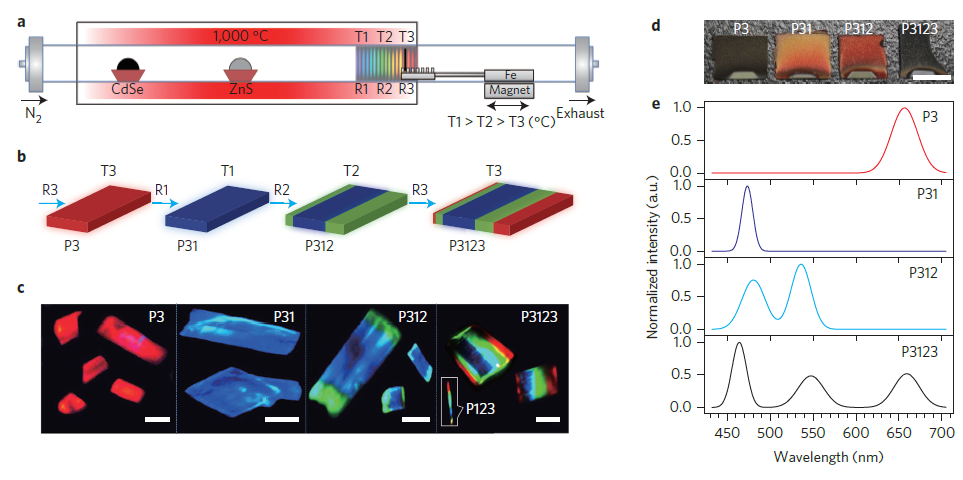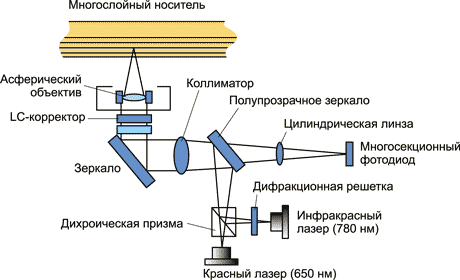Scientists first designed a monolithic RGB laser

Growing a nanosubstrate
American scientists from the University of Arizona for the first time managed to create a monolithic RGB laser. The light-emitting elements are located on the same nanoscale substrate, and the color of the emitted beam can be freely adjusted in a wide range, including the receipt of a white beam.
The laser (laser, light amplification by stimulated emission of radiation, "converts light into coherent monochromatic (i.e., single-color) radiation. Einstein predicted the existence of the effect of stimulated emission in 1916, and the first laser based on an artificial ruby crystal was made in 1960.
A distinctive feature of the laser beam is one constant wavelength (or a discrete set of lengths), or one specific color. What our eye perceives as white is an achromatic set of radiation with different wavelengths that have equal power, so it is impossible to produce a white laser.
But you can combine the radiation of several lasers with different wavelengths. If, for example, we combine lasers of three primary colors (red, green, blue - RGB), we get a white color. Laser systems combining several beams and giving out different colors are widely used in various fields of human activity, including even laser show programs. But such devices cannot be made small enough to be used in microelectronics.

In the once popular, and now gradually outgoing optical drives, lasers with different wavelengths are used to work with different types of drives - CD, DVD, Blu-Ray. Therefore, universal lasers use several lasers. True, Sony back in 2003 manufactured a dual-band monolithic laser in the laboratory for use both for burning CD-R / RW and DVD discs, but it did not reach production.

The creation of monolithic lasers faced particular difficulties associated with the fact that it was necessary to combine semiconductors with very different characteristics in one structure. Crystals are distinguished by lattice constants- the size of the crystalline cells. The wavelength of the radiation emitted by the laser depends on these constants. But it was not possible to grow crystals combined together with very different constants using traditional methods.
But scientists from Arizona managed to create a semiconductor structure consisting of three segments, each of which emits waves in its own range. It consists of zinc, cadmium, sulfur and selenium, divided into segments. When the substrate is excited, cadmium and selenium together emit red radiation, cadmium and sulfur - green, and zinc and sulfur - blue. This achievement has been made possible thanks to more than ten years of research related to nanotechnology. For crystal growth, the “double ion exchange" method was used.
According to scientists, lasers are a more efficient light source than LEDs, and more colors can be transmitted with a laser. According to Professor Kun-Zhen Ning, who led the study, according to their data, a monolithic laser is capable of reproducing 70% more colors than is provided by the current standard for LED displays.
In addition to lighting and displays, lasers can be used to develop the most efficient Li-Fi data transmission system. This system uses room lighting to transmit data through light pulses within line of sight. Such a system on LEDs, which is currently under development, should provide transmission speeds that are an order of magnitude higher than the current Wi-Fi capabilities. At the same time, according to the researcher, laser Li-Fi can be one or two orders of magnitude faster than LED-based.
